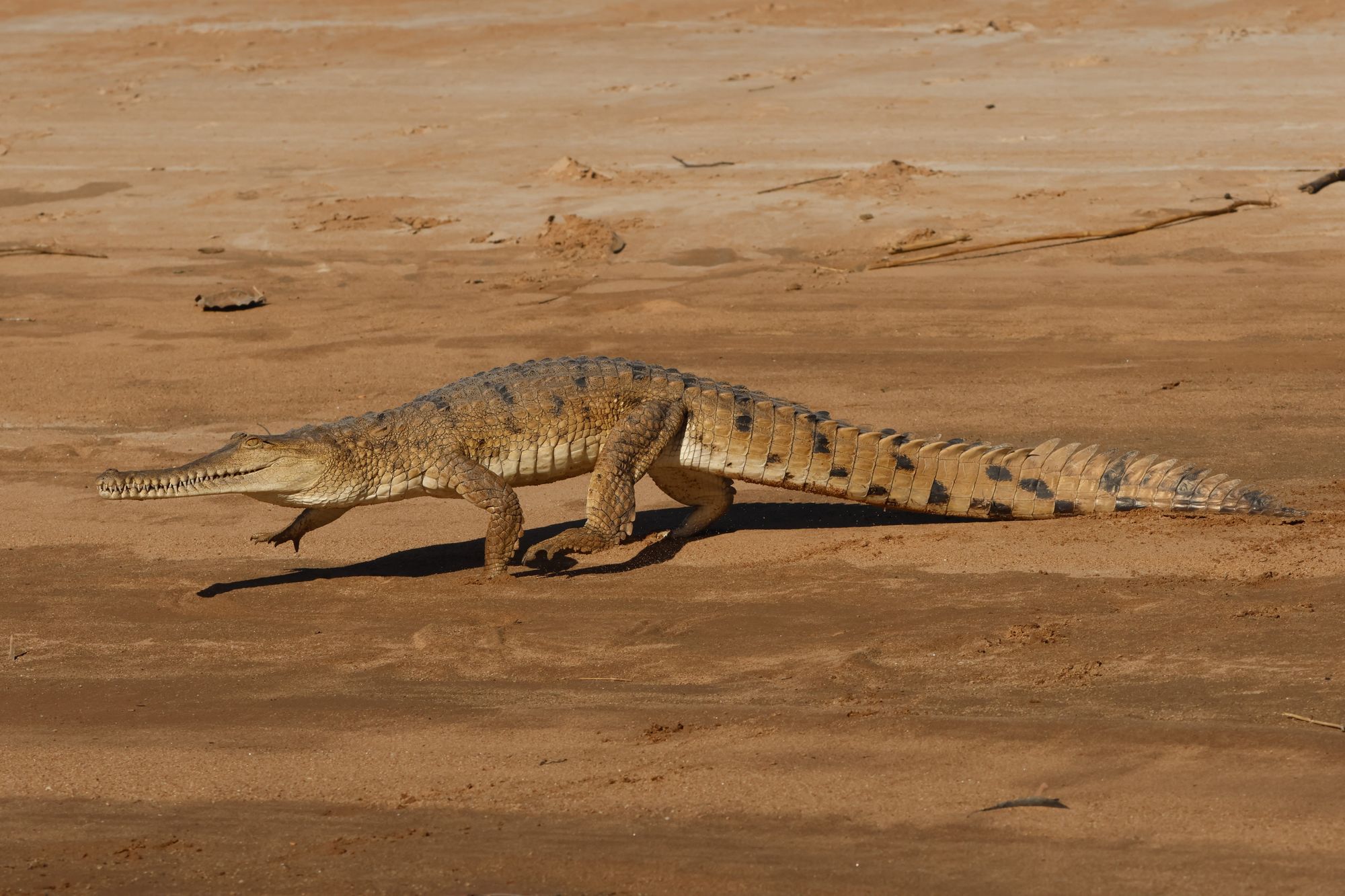Crocodilian Natural History

Here you will find some basic information regarding crocodilian natural history. For more detailed information, I recommend Biology and Evolution of Crocodylians by Gordon Grigg and David Kirshner, the current gold standard crocodilian textbook.
What are crocodilians?
A "crocodilian" is any crocodile, alligator, caiman, gharial, or Tomistoma. Alligators and caimans are members of the Alligatoridae family and are considered "alligatorids". Gharials and Tomistomas are controversially members of the Gavialidae family and are considered "gavialids". True crocodiles are members of the Crocodylidae family.
When did crocodiles and alligatorids last share a common ancestor?
True crocodiles and alligatorids diverged around 90 million years ago. For comparison, humans and chimpanzees last shared a common ancestor 6-9 million years ago.
What is the Gharial and Tomistoma controversy?
The morphological and molecular evidence placing Tomistomas in Gavialidae is inconsistent and contradictory. While it is currently listed as a gavialid, there is evidence that it may belong in the Crocodylidae family. Some authors having even suggested that there is not enough evidence for Gavialidae to exist as its own family and that it should be absorbed into Crocodylidae. This controversy has yet to be resolved.
What living animals are crocodilians most closely related to? Are they related to lizards?
Based on their appearance, many people may assume that crocodilians are related to lizards. In fact, in some Spanish speaking countries crocodilians are frequently referred to as "lagarto" (Spanish for "lizard") and the word "alligator" is actually derived from "el lagarto" ("the lizard"). However, crocodilians are actually not closely related to lizards. Crocodilians are archosaurs, a clade that also consists of birds and non-avian dinosaurs. That's right, crocodilians are most closely related to birds! And since we now know that birds actually ARE dinosaurs, crocodilians are most closely related to dinosaurs.
Which crocodilians are most threatened with extinction?
At least 7 crocodilian species are currently listed as Critically Endangered (CR) by the IUCN Red List of Threatened Species including 5 crocodiles (Siamese crocodile, Philippine crocodile, Orinoco crocodile, Cuban crocodile, West African slender-snouted crocodile), 1 alligatorid (Chinese alligator), and 1 gavialid (Indian gharial). In addition, the Tomistoma/false gharial is considered Endangered (EN).
How many living crocodilian species are there?
When I was a boy, there were only 23 recognized species of crocodilian. However, due to a large amount of research in the 21st century, that number has increased. Today, there are 26 recognized species including 16 crocodiles, 8 alligatorids (2 alligators and 6 caimans), and 2 gavialids. This number may increase to at least 28 species, with one more dwarf crocodile proposed and the potential splitting of the northern and southern populations of the New Guinea crocodile. The IUCN Red List determines species status using the following designations, from least threatened to most threatened- Least Concern (LC), Near Threatened (NT), Vulnerable (VU), Endangered (EN), and Critically Endangered (CR). Species that lack enough status information are listed as Data Deficient (DD). All species listed as VU, EN, or CR are considered 'threatened'. The following is a list of all 26 currently recognized species and the current Red List status:
Crocodiles
Saltwater Crocodile (Crocodylus porosus) (LC)
Nile Crocodile (Crocodylus niloticus) (LC)
Mugger Crocodile (Crocodylus palustris) (VU)
American Crocodile (Crocodylus acutus) (VU)
Morelet's Crocodile (Crocodylus moreletii) (LC)
Australian Freshwater Crocodile (Crocodylus johnstoni) (LC)
Siamese Crocodile (Crocodylus siamensis) (CR)
Orinoco Crocodile (Crocodylus intermedius) (CR)
Cuban Crocodile (Crocodylus rhombifer) (CR)
Philippine Crocodile (Crocodylus mindorensis) (CR)
West African Crocodile (Crocodylus suchus)
Northern New Guinea Crocodile (Crocodylus novaeguineae) (LC)
West African Slender-snouted Crocodile (Mecistops cataphractus) (CR)
Central African Slender-snouted Crocodile (Mecistops leptorhynchus)
African dwarf crocodile (Osteolaemus tetraspis) (VU)
Congo dwarf crocodile (Osteolaemus osborni)
Alligators
American Alligator (Alligator mississippiensis) (LC)
Chinese Alligator (Alligator sinensis) (CR)
Caimans
Black Caiman (Melanosuchus niger) (LC)
Spectacled Caiman (Caiman crocodilus) (LC)
Yacare Caiman (Caiman yacare) (LC)
Broad-snouted Caiman (Caiman latirostris) (LC)
Smooth-fronted Caiman (Paleosuchus trigonatus) (LC)
Dwarf Caiman (Paleosuchus palpebrosus) (LC)
Gavialids
Indian Gharial (Gavialis gangeticus) (CR)
Tomistoma/False Gharial (Tomistoma schlegelii) (EN)
